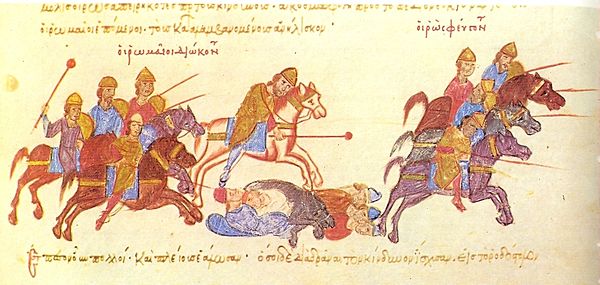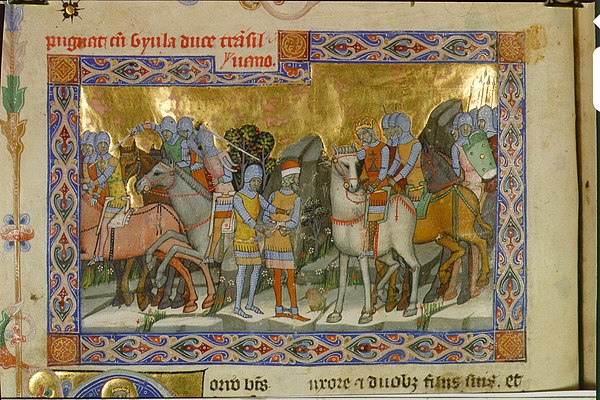
Principality of Hungary
The Principality of Hungary was the earliest documented Hungarian state in the Carpathian Basin, established 895 or 896, following the 9th century Hungarian conquest of the Carpathian Basin. The Hungarians, a semi-nomadic people forming a tribal alliance led by Árpád (founder of the Árpád dynasty) arrived from Etelköz which was their earlier principality east of the Carpathians.
During the period, the power of the Hungarian Grand Prince seemed to be decreasing irrespective of the success of the Hungarian military raids across Europe. The tribal territories, ruled by Hungarian warlords (chieftains), became semi-independent polities (e.g., the domains of Gyula the Younger in Transylvania). These territories were united again only under the rule of St. Stephen. The semi-nomadic Hungarian population adopted settled life. The chiefdom society changed to a state society. From the second half of the 10th century, Christianity started to spread. The principality was succeeded by the Christian Kingdom of Hungary with the coronation of St Stephen I at Esztergom on Christmas Day 1000 (its alternative date is 1 January 1001). The Hungarian historiography calls the entire period from 896 to 1000 "the age of principality".
































